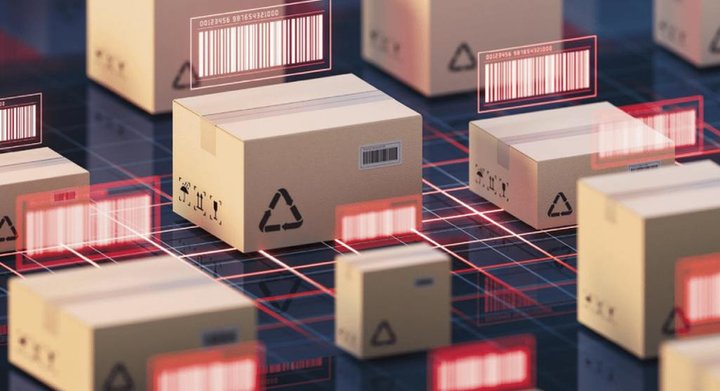
Revolutionizing Returns Management:
Gaurav Saran, Founder and CEO, ReverseLogix unravels the company's leadership in returns management
Smarter Returns
The entirety of a return’s lifecycle
Impact of implementing returns management system
Returns management: Not an after-thought anymore
Misperception around implementation
Returns experiences: Getting the basics right
Fostering a culture of success
The Roadmap: Future initiatives
IN DEPTH

Can you offer us a glimpse of your entrepreneurial passion for unravelling the intricacies of returns management? Since the inception of ReverseLogix in 2014, how have you solidified your leadership position within the returns management segment? Additionally, could you impart some invaluable insights learned from your journey in the realm of returns management?
Could you provide insights into the tangible impact observed by customers who integrated the ReverseLogix solution? How has this influenced their post-purchase processes, profitability and, in turn, enhanced overall customer satisfaction?
The realm of returns management is often fraught with complexities and challenges. Could you shed light on these intricacies and elucidate how they impact businesses? Furthermore, what strategic approaches and best practices can enterprises employ to effectively address these challenges and enhance their returns management processes?
Automation has become a cornerstone for many brands and e-commerce players in revolutionizing their returns processes. Could you delve into the diverse methodologies and technologies they've embraced, shedding light on how automation is reshaping the returns phase? Additionally, what barriers might be hindering others from implementing similar automated solutions?
Jabra is a global leader in audio video solutions, and they recently implemented ReverseLogix for their B2B and B2C returns. They’ve seen many improvements, but three of the biggest are: 1) they were able to consolidate four different return flows into a single solution; 2) they’ve cut workloads even though they’ve expanded their reach and are handling more returns overall; and 3) their customer satisfaction scores have increased “significantly” due to new self-service options and better communication around return status and warranty claims.
Until recently, returns management was an after-thought for a lot of companies, and that’s reflected in their org structure: No one “owns” returns. It doesn’t fall neatly under one pyramid. Returns impact supply chain, customer service, merchandising, sustainability, and so much more. One of the most strategic things a company can do is hire a Chief Returns Officer to own this vital part of the business. This person must be a cross-functional, senior-level individual; someone who can challenge a company to reimagine returns management while protecting and strengthening customer service and align it with corporate sustainability goals.
Automation can help drive loyalty in a lot of ways: A company could use an RMS to create a rule that their loyalty club members or highest spending customers receive an instant refund when they initiate a return, rather than waiting until the return is received at the warehouse.
For employees, automation simplifies complex rules – we’ve seen warehouse teams double the number of returns they process in the same time frame after they’ve implemented ReverseLogix. A barrier to better automation could be the misperception that an RMS has a long implementation. Or that configuration is complicated. But in reality, an RMS integrates with an existing tech stack and can be live in a few weeks. A lot of our customers see an ROI within days of turning on our system – they don’t have to wait months or years.
Our success has come from addressing the entirety of a return’s lifecycle. There’s a lot of point technology that addresses a few steps of a return, like customer portals and communications, but the ability of our returns management system (RMS) to address every step is unique. That includes customer initiation, workflows, dispositioning, pricing, recommerce, data analysis, etc. – they’re all essential if a company really wants to lower its returns volume and improve the cost and time to manage it.
One of the insights that’s really come to light in the last few years has been the C-suite’s focus on sustainability. Returns have a big impact on the environment and the urgency of greening supply chains has made returns management even more of a priority for forward-thinking companies.
Our success stems from addressing the entirety of a return’s lifecycle, uniquely handling customer initiation, workflows, dispositioning, pricing, recommerce, and more—essential steps to reduce returns volume and enhance cost-efficient management.



Could you share a compelling example of both the most exemplary and challenging post-purchase return experiences you've observed within the industry in 2023? What valuable insights can businesses glean from these instances to elevate their own post-purchase practices and customer satisfaction?
Consumers expect instant satisfaction, so the thought of waiting weeks for a return to be completed is just out of the question. I recently returned something to a very well-known retailer who I regularly buy from (they don’t use ReverseLogix, by the way) and it took more than 30 days to get my refund. That stunned me. So, I would encourage retailers to get the basics of good returns management in place: Frequent communications about a customer’s return status, fast refunds or even instant refunds for their best customers.
One of the best returns experiences I’ve seen are the returns that don’t happen because a retailer has better product information to help shoppers make better buying decisions. Our customer, Amer Sports, is using data to get better control of their returns process so they can help their brands understand what needs to be improved and lower returns volume overall.
In the context of ReverseLogix, how do you define and cultivate a strong company culture? What aspects of ReverseLogix's culture are you most proud of as a leader, and how do these elements contribute to the success and growth of the organization?
Finally, as a visionary in this space, could you offer a glimpse into the future roadmap of your company? What strategic direction and future initiatives do you envision for ReverseLogix that will propel the organization forward within the returns management landscape and beyond?
Our culture at ReverseLogix is about supporting good people doing good things. I’m really proud of our culture because it doesn’t come from me; it requires everyone in the company to build an environment where they feel comfortable asking questions, are willing to make themselves accessible, and help each other regardless of role or seniority. When people feel good about coming to work, it spills over into everything we do for our clients and our commitment to their success.
Sustainability is huge for our customers, so we’re really focused on tools and initiatives that help them align returns management with sustainability goals. We’re exploring new ways that our data and AI tools inform decisions and disposition based on packaging, emissions, the opportunity for reselling the item, repairs, etc. It’s really about reducing return volumes as much as possible and then managing what comes back in the smartest, most sustainable way for the business and the planet.
Automation simplifies complex rules; warehouse teams using ReverseLogix doubled return processing while instantly refunding loyal customers. Implementing an RMS integrates seamlessly and yields ROI within days, dispelling misconceptions about implementation complexities.



Seamless Fulfillment:
The Power of Orchestration
Russ Bair, Chief Product Officer, Delivery Solutions
READ MORE


Beyond Consulting:
Retail Resilience Redefined
Kevin Shank, CEO, Compucom
READ MORE


Smarter Returns
Gaurav Saran, Founder and CEO, ReverseLogix
READ MORE


Returns Redefined
Tara Daly
Sr. Director of Product Marketing, Loop
READ MORE






Jahzeel Omar is the Associate Director of Retail Partnerships at Cover Genius, the insurtech for embedded protection. Together, Cover Genius and its partners protect the global customers of the world’s largest digital companies, including Booking Holdings and Intuit. Cover Genius is also available at Amazon, Flipkart, eBay, Wayfair and SE Asia’s largest company, Shopee.